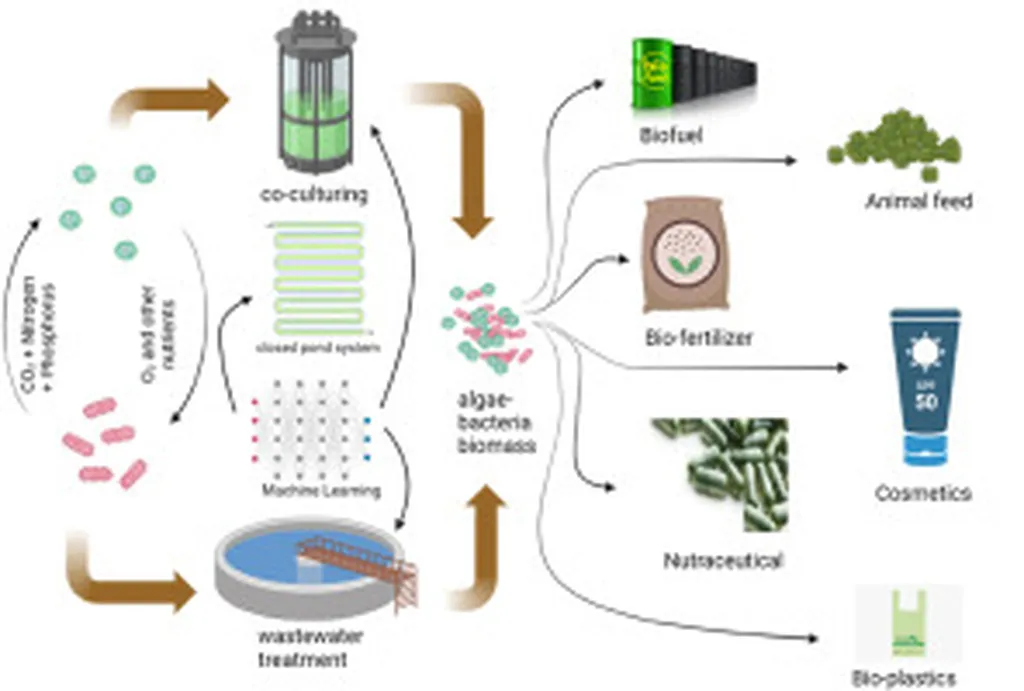In the quest for cleaner water, scientists are turning to an unlikely ally: bacteria. Researchers have developed a novel method for wastewater treatment using zinc oxide nanoparticles conjugated with cysteine, synthesized with the help of Bacillus licheniformis. This breakthrough, led by Muhammad Naveed from the University of Central Punjab in Lahore, Pakistan, could revolutionize how industries approach water purification, particularly in the energy sector where wastewater management is a critical challenge.
The study, published in the journal ‘Desalination and Water Treatment’ (which translates to ‘Water Purification and Treatment’), demonstrates a green synthesis approach that enhances the stability and biocompatibility of zinc oxide nanoparticles. By using Bacillus licheniformis, a bacterium known for its secondary metabolites, the researchers were able to create nanoparticles that are not only effective but also environmentally friendly.
“Traditional wastewater treatment methods often fall short in removing persistent contaminants,” explains Naveed. “Our approach leverages the natural properties of Bacillus licheniformis to create nanoparticles that are highly efficient in adsorbing heavy metals and degrading organic pollutants.”
The synthesized cysteine-conjugated zinc oxide nanoparticles (ZnO-Cys NPs) were characterized using various techniques, including X-ray diffraction (XRD), scanning electron microscopy (SEM), Fourier-transform infrared spectroscopy (FTIR), and UV-Vis spectrophotometry. SEM analysis revealed well-dispersed nanoparticles with an average size of 66 nanometers, a crucial factor for their effectiveness.
Batch adsorption experiments showed remarkable results, with over 87% removal of heavy metals like lead and cadmium, and more than 82% degradation of organic pollutants. The FTIR analysis confirmed the presence of cysteine functional groups, which enhance the nanoparticles’ adsorption capabilities. Additionally, the nanoparticles exhibited strong biological activity, with significant anti-inflammatory, antioxidant, and anti-hemolytic effects, confirming their low cytotoxicity.
One of the most compelling aspects of this research is its potential for large-scale application. The nanoparticles demonstrated sustained adsorption efficiency over multiple cycles, making them a viable option for industrial use. “The reusability of these nanoparticles is a game-changer,” says Naveed. “It means that industries can implement this technology without the constant need for new materials, reducing costs and environmental impact.”
The energy sector, in particular, stands to benefit from this innovation. Wastewater management is a significant challenge for energy companies, especially those involved in oil and gas extraction, which often produce large volumes of contaminated water. The use of ZnO-Cys NPs could provide a more efficient and eco-friendly solution for treating this wastewater, ensuring that it meets regulatory standards before being released back into the environment.
Moreover, the photocatalytic properties of these nanoparticles could enhance the degradation of organic pollutants under UV light, further improving water quality. This multifunctional approach not only addresses the immediate need for effective wastewater treatment but also paves the way for future developments in environmental remediation technologies.
While the research highlights the promise of ZnO-Cys NPs, Naveed acknowledges that further evaluation is needed to assess their large-scale production, long-term stability, and environmental impact. “We are optimistic about the potential of this technology,” he says. “However, it’s essential to conduct more studies to ensure its feasibility and sustainability in real-world applications.”
As industries continue to seek innovative solutions for wastewater treatment, the work of Naveed and his team offers a glimpse into a future where bacteria and nanotechnology combine to create cleaner, safer water. This research not only advances our understanding of green synthesis and wastewater treatment but also underscores the importance of interdisciplinary collaboration in tackling global environmental challenges.
In the ever-evolving landscape of agritech and environmental science, this study serves as a testament to the power of innovative thinking and the potential for groundbreaking discoveries that can shape the future of water purification.

